Udiliv, Ursodesoxycholic Acid
- Introduction
- Ursodeoxycholic Acid Uses
- Off-Label Uses of Udiliv
- Management of Intrahepatic Cholestasis of Pregnancy (ICP)
- Treatment of Drug-Induced Liver Injury (DILI)
- Use in Pediatric Cholestatic Liver Disorders
- Potential Role in Preventing Colon Cancer in High-Risk Patients
- Ursodeoxycholic Acid for Bile Reflux
- Ursodeoxycholic Acid for Dogs
- Ursodeoxycholic Acid in Ulcerative Colitis
- Ursodeoxycholic Acid Mechanism of Action
- Dosage and Administration
- Standard Dosage for Various Conditions
- Dose Adjustments Based on Age, Weight, and Medical Condition
- Maximum Dose of Ursodeoxycholic Acid
- Maximum Dose of Ursodeoxycholic Acid in Pregnancy
- Ursodeoxycholic Acid Dosage for Adults
- Ursodeoxycholic Acid Dose in Neonates
- Ursodeoxycholic Acid Dose for Dogs
- Dose of Ursodeoxycholic Acid in Jaundice
- Administration Guidelines
- Composition of Udiliv
- Storage Guidelines
- Drug Interactions
- Ursodeoxycholic Acid Warnings and Contraindications
- Ursodeoxycholic Acid Side Effects
- Rare but Serious Side Effects
- Careful Administration Guidelines
- Important Precautions
- Administration in Special Populations
- Overdose and Management
- Handling Precautions
Introduction
The pharmaceutical formulation Udiliv focuses on Ursodesoxycholic Acid (UDCA). Plays a role in modern liver health management within the field of hepatology. UDCA is derived from bile acids. It is well known for its effects on liver function and its ability to treat various hepatobiliary disorders. Initially discovered in the bile of bears and historically used in medicine in East Asia, UDCA has undergone significant advancements to become a synthetic compound with valuable medicinal properties through years of pharmaceutical research and innovation. Contemporary medications such as Udiliv offer a method for addressing issues with bile acid levels and supporting liver function.
- It assists in regulating the flow of bile.
- It helps decrease inflammation in the liver.
- Encourages the strength of liver cells.
UDCA's uses go beyond addressing symptoms; it helps rebalance the bile composition to relieve conditions and ensure the liver functions at its best.

Ursodeoxycholic Acid Uses
Treatment of Primary Biliary Cholangitis (PBC)
Ursodeoxycholic Acid (UDCA) treats primary biliary cholangitis, a chronic autoimmune disease characterized by the progressive destruction of bile ducts. UDCA alters bile composition and enhances bile flow, and CA mitigates cholestasis and prevents the accumulation of toxic bile acids. This intervention alleviates symptoms such as fatigue and pruritus and decelerates disease progression.
- Lowers the levels of alkaline phosphatase in the bloodstream.
- Reduces the chances of developing liver fibrosis and cirrhosis.
- Enhances the chances of survival over a period
UDCA stands out as a breakthrough in treating PBC when used as the treatment option.
Management of Gallstone Disease
UDCA provides a surgical remedy for cholesterol gallstones that develop from an imbalance in bile components. This bile acid helps lower cholesterol levels in bile fluid, resulting in the dissolution of gallstones. This treatment method is especially beneficial for individuals not eligible for surgery or opt for invasive treatment alternatives.
Notable advantages of this approach include:
- Achieving an equilibrium of bile acids
- Decreased necessity for gallbladder removal
- Improved relief from symptoms
UDCA continues to be a choice in treating conditions related to gallstones while reducing the risks linked with surgical treatments.
Treatment of Non-Alcoholic Fatty Liver Disease (NAFLD)
In cases of Non-Alcoholic Fatty Liver Disease (NAFL), where fat builds up in liver cells, harming the liver's health and function, UDCA demonstrates protective benefits for the liver by addressing oxidative stress and regulating bile acid processes to improve liver inflammation and fat accumulation issues.
Key results include:
- Decrease in transaminase levels.
- Enhanced liver tissue examination.
- Reducing the likelihood of developing Non-Alcoholic Steatohepatitis (NASH).
UDCA supplements lifestyle. Dietary adjustments to improve the effectiveness of managing NAFLHD as a complementary treatment option.
Supportive Therapy in Liver Transplantation
After a liver transplant procedure is done successfully with the help of UDCA, it is an assisting treatment to enhance the function of the graft and prevent any issues that may arise post-surgery.
- It helps prevent issues with the bile ducts.
- It helps avoid cholangiopathy.
- Improves the longevity of the transplant overall.
Including UDCA in transplant care protocols highlights its importance in hepatobiliary medicine.
Liver problems linked to Cystic fibrosis (CFLD) often occur in individuals with the condition. To tackle the root cause of CFLD, ursodeoxycholic acid (UDCA) boosts bile flow and lessens inflammation in the bile duct system. This treatment effectively handles liver-related issues and extends life expectancy.
Key advantages of utilizing UDCA for CFLF are:
- Enhanced liver enzyme levels
- Decrease in liver fat accumulation
- Guarding against liver conditions
The diverse uses of UDCA in liver conditions showcase its value in hepatology.
Off-Label Uses of Udiliv
Management of Intrahepatic Cholestasis of Pregnancy (ICP)
Udiliv, containing Ursodeoxycholic Acid, has demonstrated efficacy in managing Intrahepatic Cholestasis of Pregnancy (ICP), a liver condition that occurs during pregnancy and poses risks to both mother and fetus. By promoting bile flow and reducing bile acid toxicity, Udiliv alleviates maternal pruritus and minimizes adverse fetal outcomes, such as preterm birth or stillbirth.
- Lowers levels of bile acids in the bloodstream.
- Enhances the well-being of mothers.
- Reduces the risk of distress and associated complications.
Playing a role in managing ICP, it offers a treatment option in obstetric hepatology.
Treatment of Drug-Induced Liver Injury (DILI)
Drug-induced liver injury (DILI), which results from medications that harm the liver, requires specific treatments to be effectively addressed. Udiliv protects the liver by reducing stress and enhancing function. It helps restore liver enzyme levels and reverse hepatocyte damage caused by bile acids.
- Helps with the regrowth of the liver.
- It helps reduce cholestasis caused by medications.
- Encourages the body's natural detox processes.
This unconventional use plays a role in handling both long-term cases of drug-induced liver injury (DILI).
Use in Pediatric Cholestatic Liver Disorders
For liver conditions such as atresia and progressive familial intrahepatic cholestasis (PFIC), treatment with Udiliv is commonly advantageous for children. Udiliv decreases the build-up of bile acids and enhances bile flow, which helps prevent issues like growth delays and vitamin deficiencies in individuals.
Noteworthy benefits can be observed in the realm of hepatology:
- Enhances the intake of nutrients.
- Reduces pruritus and Unease.
- Improves the functioning of the liver.
Potential Role in Preventing Colon Cancer in High-Risk Patients
Recent findings indicate that Ursodeoxycholic Acid may play a role, in reducing the likelihood of colon cancer in individuals at risk by altering the bile acid makeup and reducing inflammation in the intestines; this process, with Udiliv could potentially block cancer causing pathways in the colon.
- Minimizes harm to the cells caused by bile acids.
- Slows down the advancement of cell growth in the colon.
- Promotes harmony in the gut microbiome.
This exciting new use showcases an aspect of Udiliv's involvement in cancer prevention efforts.
Ursodeoxycholic Acid for Bile Reflux
Bile reflux sufferers deal with the effects of bile flowing back into the stomach and esophagus, which can lead to discomfort and issues like gastritis. Udiliv plays a role in mitigating the impact of bile by counteracting its toxicity and alleviating irritation and inflammation in these areas.
- Help prevent damage from stomach acid in the esophagus.
- Enhances the quality of life for patients.
Udilivs flexibility in treating conditions is highlighted by its off-label application.
Ursodeoxycholic Acid for Dogs
Veterinary care now utilizes Ursodeoxycholic Acid to treat liver and gallbladder issues in dogs, like hepatitis and gallbladder disease, by enhancing bile flow and reducing harmful bile acid buildup with Udiliv for improved liver function and overall health outcomes for our furry friends.
- Encourages the detoxification process in the liver.
- Lowers the levels of liver enzymes.
- Enhances hunger in dogs experiencing symptoms.
This application highlights its healing significance for all kinds of creatures.

Ursodeoxycholic Acid in Ulcerative Colitis
In cases of Ulcerative Colitis, a bowel condition, Ursodeoxycholic Acid could provide advantages by adjusting bile acid processes and lessening oxidative pressure on the intestinal lining. Early results suggest it may help reduce inflammation and support the healing of the membranes.
- It helps decrease stress in the system.
- Enhances the strength of the cells lining the colon.
- It may reduce the chances of developing dysplasia.
This new application promises to broaden treatment options for bowel conditions.

Ursodeoxycholic Acid Mechanism of Action
Reduction of Bile Acid Toxicity
Ursodeoxycholic Acid (UDCA) decreases the harm caused by bile acids in the body by swapping bile acids with a less harmful form in the bile pool. This switch helps prevent cell death and damage triggered by oxidative stress from bile acids, safeguarding liver cells.
- Help to shield cell membranes from damage caused by bile acids.
- Reduces the impact of natural bile acids on cells.
- Strengthens the integrity of liver cells.
This mechanism plays a role in UDCA's effectiveness in managing liver disorders and associated complications.
Improvement of Bile Flow
UDCA helps bile flow by decreasing the thickness of bile and encouraging the release of bile acids from liver cells into the bile ducts. This action increases the elimination of metabolites and enhances the overall function of liver waste removal. By boosting bile flow, UDCA reduces cholestasis and supports liver detoxification.
Some key benefits are;
- Decrease in the blockage of bile acids.
- Avoiding blockage in the bile ducts
- Improved removal of waste products from metabolism.
Its effectiveness in improving bile flow highlights its success in addressing conditions related to the bile duct.
Anti-inflammatory and Immunomodulatory Effects
UDCA does not help regulate bile acid. It also has potent anti-inflammatory and immune system-modulating effects. It lowers the levels of inflammation, causes cytokines in the liver, and helps control inflammation. Moreover, UDCA regulates the system by blocking T lymphocyte activation and reducing stress, which ultimately lessens damage to liver tissues.
- It works to reduce inflammation within the cells
- It helps to protect the liver from damage caused by the system
- Reducing stress in liver tissues
These characteristics make UDCA especially useful in treating liver and term inflammatory conditions.
Ursodeoxycholic Acid Half-Life
UDCA doesn't stay in the body for long, with a half-life of about 3.5 to 6 hours. That said, this substance is cleverly absorbed again and again within the liver and intestines due to circulation. This unique characteristic helps UDCA treat conditions well while limiting its effects to specific body areas.
Some important things to note about how UDCA works in our system are:
- Efficient absorption by the liver and processing through conjugation.
- Extensive recycling of substances within the liver systems.
- Low levels of harm to the body as a whole.
The lifespan and reusing processes guarantee a lasting healing impact, establishing UDCA as a choice for treating long-term liver ailments.
Dosage and Administration
Standard Dosage for Various Conditions
- Chronic liver diseases typically require a dosage of 10–15 mg/kg/day
- Gallstone treatment typically involves a dosage of 8–10 mg/kg/day
- Cholestasis conditions usually require a dosage of 13–15 mg/kg/day
Following the dosage instructions tailored to each condition is essential to achieve the best results.
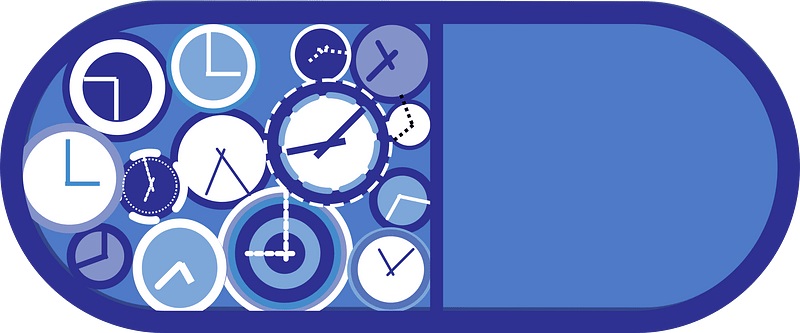
Dose Adjustments Based on Age, Weight, and Medical Condition
Ursodeoxycholic acid dosage is customized based on factors such as the patient's age, weight, and situation. Pediatric dosages are carefully calculated, starting around 10 mg/kg/day, and can be fine-tuned when necessary. Likewise, individuals with severe liver ailments or other medical issues may need dose changes to avoid harmful effects or ensure effective treatment.
Here are some factors to think about when making adjustments:
- In children receiving treatment in units, doctors usually prescribe medication based on their weight at a dose of 10–15 mg/kg/day
- Elderly patients should be closely monitored for any signs of liver or kidney issues.
- Comorbidities considerations include making adjustments for interactions between medications or impaired organ function.
Maximum Dose of Ursodeoxycholic Acid
The usual maximum amount of Ursodeoxycholic Acid advised is 20 mg/kg/day. Surpassing this limit could reduce its effectiveness and cause issues, like diarrhea or liver problems, in individuals.
Maximum Dose of Ursodeoxycholic Acid in Pregnancy
During pregnancy, the right amount of medication is calculated cautiously to ensure that effectiveness and safety are balanced well. For conditions such as Cholestasis of Pregnancy (ICD), doses usually fall within the range of 15–20 mg/kg/day. Require frequent checks on the health of both the mother and the baby.
- ICU management may involve a dosage of up to 20 mg/kg/day
- Ensuring mothers' well-being and their babies' health is a priority.
- Regular monitoring of the levels of bile acids
Ursodeoxycholic Acid Dosage for Adults
In adults, the recommended amount is between 20 mg/kg/day, divided into doses to ensure absorption. This guideline is relevant for PBC, NAFLD, and gallstone dissolution. The treatment plan is tailored according to how patients respond to it and their ability to tolerate it.
Ursodeoxycholic Acid Dose in Neonates
The usual starting dose for newborns with disorders is around 10-15 mg/kg/day. To maintain safety and effectiveness, liver function and bile acid levels must be monitored.
- The initial dosage recommended is 10 mg/kg/day.
- Progressive adjustment according to real-world results.
- Regular monitoring of liver enzymes
Ursodeoxycholic Acid Dose for Dogs
In veterinary medicine, dogs are given Ursodeoxycholic Acid in doses ranging from 10-15 mg/kg/day to treat conditions. The dosage is split into two doses and can be modified depending on the seriousness of the condition and how the dog reacts to it.
Dose of Ursodeoxycholic Acid in Jaundice
For cases of jaundice linked to cholestasis in the liver function, the dose typically falls within 10-15 mg/kg/day and may vary based on the condition's root cause. Early treatment, with the dosage, can help ease symptoms and enhance liver function.
Administration Guidelines
You can take Ursodeoxycholic Acid with or without food; however, some individuals might tolerate it better with food. For effectiveness, it is often suggested to divide the dosage into two or three portions and administer them at various times throughout the day.
Here are some tips, for administration:
- Eating food may help reduce the chances of experiencing stomach discomfort.
- Splitting the doses helps maintain the regulation of bile acids over time.
- At night enhance bile acid levels, for results.
Following these instructions can improve the effects of treatment. Reduce any unwanted reactions.
Composition of Udiliv
Active Ingredients
The main component of Udiliv is Ursodeoxycholic Acid (UDCA). This bile acid derivative is well known for protecting the liver and promoting bile secretion. Aspects that underpin its uses The formula aims to enhance the absorption of UDCA in the liver and gallbladder system to maximize its effectiveness.
- The primary treatment is Ursodeoxycholic Acid.
- Pharmaceutical additives help improve the stability and absorption of medications.
- Tailored for regulation of bile acids.
.png)
Available Formulations
Forms of Udiliv are designed to meet patients' needs and preferences. Options include tablets, capsules, and oral suspensions so people of all ages and health conditions can quickly access the medication.
- Tablets are practical for administering adult doses.
- Softgel Pills are convenient to take.
- Suspensions are appropriate for children and elderly patients.
Every formula is customized to provide doses that patients can follow.
Concentrations and Variants
Different strengths of Udiliv are produced for other needs. Options include 150 mg and 300 mg pills or capsules, as well as customized liquid forms with lower concentrations for children.
- 150 mg tablets/capsules are recommended for health conditions.
- 300 mg tablets or capsules are typically recommended for managing long-term health issues.
- Suspensions are used for dosing in children and newborns.
Ursodeoxycholic Acid Generic Name
The generic name for Ursodeoxycholic Acid is UDCA. Due to its bile acid nature and medical benefits, it is known worldwide by brand names like Udiliv, Urso, and Ursodiol.
Ursodeoxycholic Acid Alternative
The medical community sometimes considers Tauroursodeoxycholic Acid (TUDCA) as an option. TUDCA is a type of UDCA conjugated with taurine. It has liver protection qualities but differs in how it's processed in the body. This potentially provides advantages in certain situations. Higher levels of antioxidants are favored in safeguarding health.
Ursodeoxycholic Acid vs Tudca
Both UDCA and TUDCA are derived from bile acids and offer benefits for the liver; however, their structure varies. Uses in medicine. UDCA is commonly prescribed for liver illnesses, while TUDCA is often used to treat metabolic issues.
- UDCA is highly effective, for treating conditions related to bile flow.
- TUDCA demonstrates improved effectiveness in addressing issues related to dysfunction.
- Taking part in the detoxification of bile acids together
Ursodeoxycholic Acid vs Ursodiol
Ursodeoxycholic Acid and Ursodiol are essentially the same thing. Ursodiol is simply a commercial term for UDCA. They denote the identical bile acid compound commonly used in liver and bile duct treatments.
Obeticholic Acid vs Ursodeoxycholic Acid
Obeticholic Acid (OCA) and UDCA both play roles in treating liver conditions; however, they work differently in the body. OCA influences bile acid production and movement by targeting the farnesoid X receptor, whereas UDCA mainly works by replacing bile acids and enhancing bile flow.
- The OCA demonstrates fibrotic properties.
- UDCA tackles the removal of toxins from bile.
- Advanced treatments combining therapies are becoming increasingly prominent in the field of hepatology.
Ursodeoxycholic Acid and Cholestyramine
Cholestyramine is a bile acid-sequestrant medication occasionally prescribed alongside UDCA to manage conditions such as itching associated with cholestasis in the liver bile ducts.
- An integrated strategy for handling cholestasis.
- Relief from itching improved.
- Timing things right to prevent any interference in absorption.
The essential role of Udiliv in managing liver and gallbladder conditions highlights its versatility and importance in healthcare.
Storage Guidelines
Recommended Storage Conditions
It is crucial to ensure their storage to preserve the strength and benefits of Ursodeoxycholic Acid (UDCA) like Udiliv and other formulations over time. These medications should be stored in a dry spot shielded from sunlight and moisture. The ideal storage temperature range, as specified on the medication packaging, usually falls between 15°C and 30°C (59°F to 86°F).
- Remember to keep the item in its packaging to avoid any risk of contamination.
- Be cautious of prolonged exposure to levels of moisture.
- Keep storage in a place where children cannot access it.
Following these guidelines ensures the medicine remains effective throughout its designated storage period.

Stability Under Different Environmental Factors
The effectiveness of UDCA can be affected by factors like changes in temperature and humidity levels, as well as exposure to light over time. Storing it at high temperatures might break down the main component and lessen its medical benefits. Likewise, too much moisture can harm the stability of tablets or capsules, causing them to deteriorate structurally.
Important factors to keep in mind regarding stability:
- Keep items in places with humidity.
- Try to stay out of sunlight as much as possible.
Manufacturers ensure that UDCA formulations are stored in packaging materials that help reduce these risks; however, patients must diligently follow the recommended storage guidelines.
Handling Instructions for Long-Term Use
To ensure that UDCA medications remain effective over time and are safely used for some time:
- Always make sure to close the bottle or blister pack to prevent any contamination.
- Avoid transferring the medication to containers as it could impact its stability and important labeling information.
Remember these handling tips:
- Before consuming tablets or capsules make sure to check for any changes, in color or signs of damage.
- Make sure to get rid of any expired medication.
- When dealing with suspensions, in temperatures try not to let them freeze, as it could change their makeup.
Adhering to the recommendations and suggestions outlined above by healthcare professionals, patients, and caregivers can maintain Udiliv's effectiveness over long-term treatment courses.
Drug Interactions
Common Drugs That May Interact with Udiliv
It's essential to be cautious with Udiliv since it has Ursodeoxycholic Acid, which might not mix well with medications, leading to changes in their effectiveness or causing side effects to occur. Antacids with aluminum hydroxide can attach to UDCA in the stomach and intestines, lowering how much of it gets absorbed into the body. How well it works as a treatment. To avoid any issues, wait two hours between taking these medications.
- Antacids containing aluminum hydroxide may decrease the absorption of UDCA.
- Potential Changes in Bile Composition Linked to Contraceptives
- Changes in metabolism may occur due to the use of medications.
The timing and supervision of administered medications must be carefully managed during these interactions.

Cholestyramine and Other Bile Acid Sequestrants
Cholestyramine and similar bile acid sequestrants can significantly reduce the effectiveness of Udiliv by attaching to Ursodeoxycholic Acid (UDCA) and blocking its reabsorption in the intestines. This leads to higher levels of UDCA in the blood and diminishes its effects.
Suggestions for handling this interaction:
- Make sure to give Udiliv a 4-hour gap before or after taking Cholestyramine.
- Keep an eye on how the treatment is working.
- If the interactions continue, you might want to explore treatment options.
Potential Interactions with Herbal Supplements
Although herbal supplements are often seen as natural and harmless, they can affect how UDCA works in the body. Common supplements, like St. John's Wort or milk thistle, may influence enzymes in the liver, changing how it processes Udiliv. Patients should tell their healthcare providers about the supplements they're taking to prevent any effects or interactions.
- St. John's Wort can induce enzymes and decrease levels of UDCA.
- Potential changes, in liver enzyme activity due, to milk thistle.
- The potential for worsening cholestasis is due to ginger or turmeric consumption.
Risks of Combining Udiliv with Alcohol
Mixing Udiliv with alcohol can be pretty risky for those with existing liver issues, as alcohol tends to worsen liver inflammation and oxidative stress while also negating the benefits of Ursodeoxycholic Acid. Udiliv effectiveness can also be reduced by long-term alcohol consumption due to its impact on bile flow.
- Elevated liver inflammation has been noted.
- Decreased flow of bile and effectiveness of UDCA.
For results, in your treatment plan with Udiliv, it is recommended that you avoid consuming alcohol during the therapy process.
Ursodeoxycholic Acid Warnings and Contraindications
Absolute Contraindications
Hypersensitivity to Ursodeoxycholic Acid
Sensitive people to Ursodeoxycholic Acid (UDCA) should avoid using it to prevent reactions, such as skin rashes or breathing difficulties that may require urgent medical attention.
- Experiencing a skin rash, along with itching and trouble breathing.
- Management instructions advise discontinuation and the administration of antihistamines or epinephrine if needed.
- Suggestion to conduct allergy testing beforehand for people at risk.

Acute Cholecystitis or Biliary Obstruction
UDCA should not be used in cases of cholecystitis or complete blockage of the bile ducts since its effectiveness relies on the bile flow in the body. Giving UDCA in these situations could worsen symptoms. Postpone surgical or other medical procedures.
- Acute cholecystitis necessitates prompt medical or surgical intervention.
- Exploring therapies involves emphasizing the importance of dealing with the root cause of the issue.
Situations Requiring Caution
Severe Liver Dysfunction
Patients with liver issues should be careful when using UDCA as it may not work well due to their condition affecting how it's processed in the body and could cause problems with the medication building up over time. It's essential to monitor liver function tests to ensure the dosage is correct for each patient.
- Severe liver damage may require dosage adjustments based on factors.
- It is recommended that liver health be monitored regularly, with tests for ALT, AST, and bilirubin levels.
- Exploring treatment options may be advisable if the condition of the liver worsens.
History of Gastrointestinal Bleeding
Individuals with an occurrence of bleeding should be approached cautiously when considering the commencement of UDCA treatment due to the potential risk of worsening bleeding in cases where the gastrointestinal tract lining is compromised or if there are existing conditions, like varices or peptic ulcers.
- History of issues include ulcers and variceal bleeding.
- Regularly checking for any indications of bleeding happening again.
- Adjunct treatments may include proton pump inhibitors or agents that promote hemostasis.
Pay attention to these cautions and restrictions to ensure you use Ursodeoxycholic Acid safely and effectively in world settings.
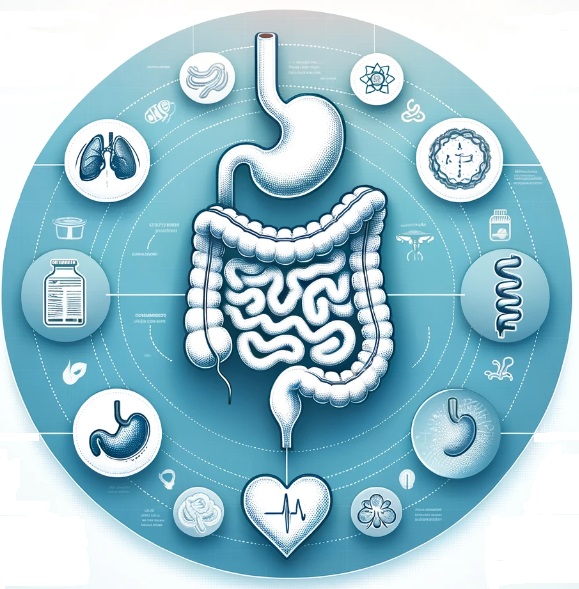
Ursodeoxycholic Acid Side Effects
Gastrointestinal Disturbances
Diarrhea
Diarrhea is commonly observed as a side effect linked to Ursodeoxycholic Acid (UDCA). It is believed to be caused by UDCA's ability to modify bile acids, potentially impacting bowel movements and stool texture changes. While it is typically not severe and tends to resolve on its own, it should be addressed by a healthcare provider to avoid dehydration or electrolyte issues.
- At dosages, it's an occurrence.
- Management tips to consider lowering the dosage or staying well hydrated.
- Discontinuing the treatment usually leads to the resolution of this issue.

Nausea and Vomiting
Sometimes, people may experience feelings of queasiness. Throwing up while undergoing UDCA treatment if they have existing sensitivities. These signs tend to show up at the start of therapy when the body is getting used to how the medication affects bile production.
- Usually, it starts in the therapy process.
- Remember to take this medication with a meal to reduce any discomfort.
- An alternative method to think about making dosage changes if the situation is severe.
For individuals facing problems, seeking advice from a healthcare professional for suitable treatment options is essential.
Dermatological Reactions
Pruritus and Rash
It's not common. Sometimes, you might experience itching and skin rashes when taking UDCA medication for liver-related issues like biliary cholangitis (PBC). These side effects are usually mild and short-lived. They typically go away when you stop or adjust the medication's dosage. These reactions could be linked to alterations in the bile acid makeup in your body, which can cause skin irritation.
- Pruritus or itching can occur in areas.
- Be felt all over the body. Usually, a rash appears red. Doesn't have characteristics.
- Management options include using antihistamines or emollients to provide relief from symptoms.
Severe or long-lasting skin reactions require assessment to exclude hypersensitivity or other potential reasons.
While the side effects of Ursodeoxycholic Acid are typically mild, timely identification and suitable treatment guarantee advantages with minimal inconvenience.

Rare but Serious Side Effects
Severe Abdominal Pain
Severe stomach aches are not uncommon. They can occur while undergoing treatment with Ursodeoxycholic Acid (UDCA), which could suggest serious issues such as an inflamed gallbladder, blocked bile ducts, or worsening of existing gastrointestinal problems. It is important to seek attention to pinpoint the underlying issue and avoid potential complications.
- The area is frequently found in the corner.
- Symptoms that may be linked to this condition include a high body temperature (fever), feelings of sickness (nausea), or yellowing of the skin and eyes (jaundice).
- Please stop taking the medication and make sure to seek medical attention.
Signs of Liver Failure or Worsening Liver Function
In some situations, UDCA might be linked to indications of liver failure or a decline in liver function. This may happen in individuals with liver conditions or as a result of interactions with medications that can harm the liver. Signs like skin coloration, dark urine, or exhaustion necessitate a prompt evaluation of liver enzyme levels and the general state of the liver.
- Signs to watch out for include swelling (ascites), mental confusion or disorientation, and a tendency to bleed easily.
- Regular liver function tests should be conducted while on treatment.
- Depending on the patient's condition, management should consider changing or stopping UDCA.
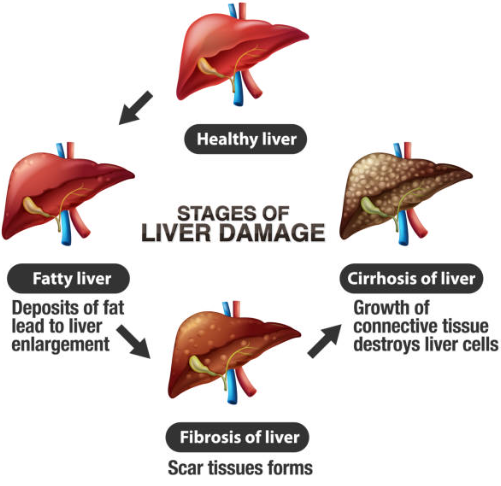
Allergic Reactions
Allergic reactions to UDCA are very uncommon. It may show up with signs, like rashes or swelling, and can even lead to anaphylaxis in some cases, requiring stoppage of the medicine and urgent medical attention.
- Experiencing symptoms like hives appearing on the skin, swelling of the face, and having trouble breathing.
- An initial course of action involves giving antihistamines or adrenaline for treatment.
- Before starting treatment, it's important to gather an allergy history.
Knowing about these side effects helps take prompt action and lower the chances of negative results while undergoing UDCA therapy.
Careful Administration Guidelines
Monitoring Requirements During Long-Term Use
Consistent monitoring is required when using Ursodeoxycholic Acid (UDCA) for a period to ensure it works effectively and catches any issues. Regularly checking liver function tests, such as alanine transaminase (ALT), aspartate transaminase (AST), alkaline phosphatase (ALP), and bilirubin levels, is crucial for tracking improvement and deciding if dosage changes are necessary.
- Liver function tests should be conducted every 3 to 6 months.
- Additional examinations may include ultrasounds to observe the bile duct and gallbladder.
- Assess the results by examining symptom improvement and changes in indicators.
Monitoring also helps catch reactions early on, such as deteriorating liver problems or hepatic decompensation and allows prompt intervention when needed.
Adjustments in Dosing for Patients with Kidney or Heart Disease
Individuals with existing kidney or heart conditions may need customized UDCA dosage plans to reduce risks, effectively manage their health conditions, and prevent any complications due to changes in drug clearance or side effects related to retention and electrolyte imbalances.
- Watch for retention symptoms or irregular heartbeats related to heart health.
- Close collaboration is crucial among liver specialists (hepatologists), kidney specialists (nephrologists), and heart specialists (cardiologists).
Proper management customized for accompanying health issues guarantees that UDCA treatment stays successful, with risks, in challenging medical situations.
Important Precautions
Pre-Treatment Assessment of Liver Function
Before starting Ursodeoxycholic Acid (UDCA) treatment, it is crucial to evaluate liver function. This includes examining liver enzyme levels, bilirubin levels, and hepatic imaging to gauge the extent of liver impairment. —these assessments before treatment aid in customizing the dosage plan and setting a standard for monitoring treatment effectiveness.
- Tests needed include ALT (alanine aminotransferase) AST (aspartate aminotransferase) ALP (alkaline phosphatase) and bilirubin levels.
- Examining the body using ultrasound or MRI to assess its anatomy.
- Aim to avoid contraindications, like a block, in the bile duct.
Commencing treatment without an assessment could jeopardize the safety of the patient and the effectiveness of the treatment.
Regular Monitoring of Liver Enzymes
Regularly checking liver enzyme levels while using UDCA treatment is crucial for monitoring its effectiveness and identifying any impacts on the body's functions. Evaluating ALT, AST, and ALP levels helps understand how well the liver functions. If the medication is working as intended to treat the condition.
- Frequency of check-ups is recommended every 3 to 6 months for patients undergoing treatment.
- Let's pay attention to spotting any signs of liver decompensation.
- Modifying doses by enzyme patterns.
Maintaining a watch promotes a stance that reduces potential dangers and improves the well-being of patients.
Importance of Adhering to the Prescribed Dosage
Following the dosage instructions is crucial for the success of the UDCA treatment plan. Avoid straying from the schedule by taking too little or too much medication, as this can lead to less-than-optimal results or adverse side effects. Patients must adhere to the timing, pattern, and amount of medication as advised by their healthcare provider.
- Insufficient Dosage Warning Concerns Lack of Treatment Effectiveness
- Taking medication could lead to a higher chance of experiencing digestive or liver-related issues.
- Consistency is key. Make sure to take your medication simultaneously every day to keep levels stable.
Ensuring patients understand the need to stick to their UDCA therapy can help them get the most out of it and reduce complications.
Administration in Special Populations
Elderly Patients
Considerations for Dosage Adjustments
Elderly individuals need dosage adjustments when taking Ursodeoxycholic Acid (UDCA), considering age-related changes in their body functions, like liver and kidney functions, may affect how the drug works and is removed from the body.
- Commencing dosage usually falls within the range of the suggested amount.
- Changes according to the patterns observed in liver enzyme trends have shown associations with results.
- Let's aim to reduce the chances of drug buildup or harmful effects.

Monitoring for Age-Related Liver or Kidney Impairments
In patients receiving UDCA treatment it's crucial to check their liver and kidney function as age related changes, in organ function could worsen existing health issues or make them more prone, to side effects.
- Liver enzyme tests and kidney function panels are conducted during the screening process.
- Frequency should be checked every 3 to 6 months. As recommended by your healthcare provider.
- Remember to make changes to therapy if you notice any issues or limitations.
Pregnant Women and Nursing Mothers
Safety Profile During Pregnancy
UDCA is commonly regarded as an option for women to use when dealing with Intrahepatic Cholestasis of Pregnancy (ICP). The positive effects it has, in alleviating itching for expecting mothers and safeguarding the child from harm, are often seen as more necessary than any potential risks involved in its usage during pregnancy.
- They have set up safety protocols for managing ICP.
- Regular monitoring of bile acid levels and liver function tests is essential.
- Cautionary Note: For use, with proper supervision.
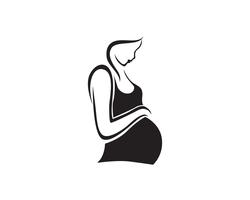
Transfer of the Drug into Breast Milk and Associated Risks
The amount of UDCA passed into breast milk is very low, which means it's usually safe for breastfeeding mothers to use it without concern about its impact on their babies' health; nonetheless, it's recommended that they keep an eye on any signs that may suggest digestive issues or allergies in the baby.
- The risk of transferring into breast milk is low.
- Keeping an eye on infants for signs of diarrhea or allergic reactions is essential.
- It is advised to seek advice from healthcare professionals for recommendations.
Children and Adolescents
Recommended Dosages Based on Age and Weight
In childrens medical cases of UDCA, treatment is adjusted according to their weight. Usually, it falls between 10 and 15 mg per kilogram per day for dosing in treating pediatric liver conditions, with fewer side effects being a priority.
- The usual dosage range is 10 to 15 mg/kg/ day.
- It should be taken in smaller doses throughout the day.
- Suspension is the preferred administration method for children. Modifications will be made according to variations in weight and the patient's progress in treatment.

Safety Considerations in Pediatric Use
Although UDCA is usually well received by children without issues, there is information on its long-term safety in kids. Monitoring liver function and growth metrics is essential to ensure the treatment remains safe and effective. The function of the liver should be regularly checked through tests.
- Keeping an eye, on ones status.
- Rare side effects are possible, such as instances of diarrhea or mild discomfort in the abdomen.
- Please ensure to give care to newborns and young children.
Using UDCA in populations needs a personalized method to enhance treatment results and maintain safety for different age groups and conditions.
Overdose and Management
Signs and Symptoms of Overdose
Overdosing on Ursodeoxycholic Acid (UDCA) is rare but possible if one exceeds the recommended dosage by a margin. The leading indicators tend to affect the system due to UDCA's ability to alter bile acids excessively. Typical symptoms consist of diarrhea and stomach pain accompanied by feelings of nausea. Continued or excessive use could worsen liver function issues for those who are more vulnerable to the effects.
- Experiencing issues such as diarrhea and vomiting along with severe abdominal pain.
- In instances, systemic impacts may include tiredness or lightheadedness.
- Potential issues related to the liver may include increased levels of liver enzymes.
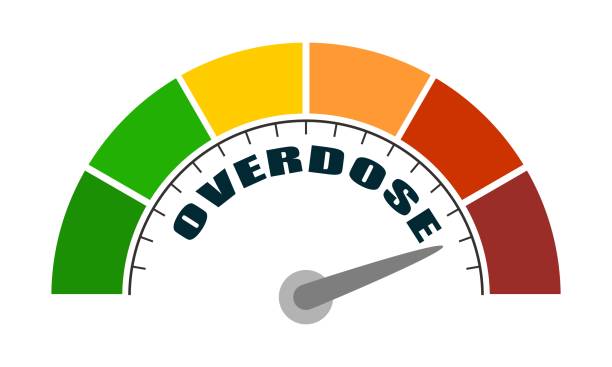
Emergency Treatment Protocols
During an overdose situation, it is crucial to act to lessen any consequences that may arise. Sustaining care plays a role in the treatment plan by prioritizing the restoration of fluids and electrolyte levels. Activated charcoal might be given to prevent absorption in cases where the overdose is discovered after ingestion.
- In the beginning stages, consider using lavage or activated charcoal within a few hours.
- Maintaining hydration through IV fluids is crucial for preventing dehydration and addressing imbalances.
- Observing the liver's performance consistently. Checking signs frequently.
Patients might need to be admitted to the hospital for observation and care.
Importance of Seeking Immediate Medical Attention
It's essential to seek help if someone has taken too much UDCA, as delaying treatment can make the symptoms worse and cause complications, particularly for those with existing liver or gastrointestinal issues. Patients and their caregivers should stay alert. Reach out to emergency services away if an overdose is suspected.
- Take action to lower the chances of any issues arising.
- Always let your healthcare providers know how much you have taken.
Identifying the symptoms of an overdose and following emergency procedures are crucial for handling it. Minimizing the potential for lasting effects.
Handling Precautions
Safe Handling of Tablets or Capsules
To keep them effective and safe, it's essential to handle Ursodeoxycholic Acid (UDCA) tablets or capsules adequately. Store the tablets and capsules in their packaging to shield them from moisture and contamination. Always avoid touching the medication with dirty hands, as it may affect the quality of the product.
- Remember to store it in a dry location that is shielded from sunlight.
- Remember to wash your hands both before and after handling.
- Remember to seal the container once you've finished using it.
The above are some steps you should take to maintain the quality and efficiency of the medication.
Disposal Guidelines for Unused or Expired Medication
Disposing of any leftovers or expired UDCA medication properly is essential to avoid ingestion or harming the environment. Follow the rules for getting rid of these medications instead of throwing them in the trash or flushing them down the toilet.
- Utilize authorized disposal facilities, for drug take back programs.
- Remember to put it in a bag before throwing it away when getting rid of medicine.
- Steer clear of flushing to safeguard water sources from contamination.
For guidance on how to dispose of them, please seek advice from your pharmacist or local waste management officials. Taking action when handling and disposing of items is crucial to safeguarding health and the environment.
Udiliv, Ursodesoxycholic Acid FAQ
- Can Ursodeoxycholic Acid cause kidney problems
- Can Ursodeoxycholic Acid cause itching
- Can you drink alcohol with Ursodeoxycholic Acid
- Does Ursodeoxycholic Acid cause weight loss
- Does Ursodeoxycholic Acid dissolve gallstones
- Is Ursodeoxycholic Acid good for fatty liver
- Is Ursodeoxycholic Acid safe in pregnancy
- Is Ursodeoxycholic Acid safe
- Is Ursodeoxycholic Acid a steroid
- How does Ursodeoxycholic Acid work in PBC (Primary biliary cholangitis)
- How does Ursodeoxycholic Acid work
- How to take Ursodeoxycholic Acid
- How Ursodeoxycholic Acid dissolve gallstones
- How long does it take for Ursodeoxycholic Acid to work
- How does Ursodeoxycholic Acid help the liver
- What is Ursodeoxycholic Acid
- What is Ursodeoxycholic Acid used for
- What are the side effects of Ursodeoxycholic Acid?
- What are the major side effects of Ursodeoxycholic Acid?
- What does Ursodeoxycholic Acid do
- What is Ursodeoxycholic Acid used to treat
- When should i take Ursodeoxycholic Acid
- When to take Ursodeoxycholic Acid
Can Ursodeoxycholic Acid cause kidney problems
Ursodeoxycholic Acid has the potential to lead to kidney issues, like injury or impairment; however, these side effects are uncommon.
Can Ursodeoxycholic Acid cause itching
Yes indeed! Ursodeoxycholic Acid can lead to itching as a side effect.
Can you drink alcohol with Ursodeoxycholic Acid
Sure thing! It's okay to have a drink or two while you're on Ursodeoxycholic Acid as long as you keep it moderate and check in with your doctor for advice that suits your health needs.
Does Ursodeoxycholic Acid cause weight loss
Ursodeoxycholic acid usually doesn't lead to weight loss; it's mainly prescribed for liver and gallbladder issues rather than for managing weight.
Does Ursodeoxycholic Acid dissolve gallstones
Sure thing! Sometimes, Ursodeoxycholic acid can break down cholesterol gallstones.
Is Ursodeoxycholic Acid good for fatty liver
Ursodeoxycholic acid is commonly prescribed for managing fatty liver conditions like alcoholic fatty liver disease (NAFL D).
Is Ursodeoxycholic Acid safe in pregnancy
Certainly! Ursodeoxycholic acid is generally deemed safe for consumption during pregnancy when recommended by a physician for conditions.
Is Ursodeoxycholic Acid safe
Certainly! Ursodeoxycholic acid is typically considered safe when taken as directed; nevertheless, it may lead to side effects and may not be appropriate for all individuals.
Is Ursodeoxycholic Acid a steroid
Ursodeoxycholic acid isn't a steroid; instead, it's a bile acid prescribed for liver and gallbladder issues.
How does Ursodeoxycholic Acid work in PBC (Primary biliary cholangitis)
In cholangitis (also known as PBC), ursodeoxycholic acid functions by decreasing the levels of harmful bile acids in the liver to enhance bile movement and shield liver cells from harm. This contributes to slowing down the advancement of the illness.
How does Ursodeoxycholic Acid work
Ursodeoxycholic Acid lowers cholesterol absorption in the intestines and reduces the concentration of bile cholesterol while aiding in the dissolution of cholesterol gallstones. Its additional benefits include enhancing bile flow and shielding liver cells from harm.
How to take Ursodeoxycholic Acid
It's recommended to take acid by mouth along with food for absorption. As a healthcare professional advises, it's usually split into two or three doses daily.
How Ursodeoxycholic Acid dissolve gallstones
The main function of Ursodeoxycholic Acid is to dissolve gallstones by lowering the amount of cholesterol in bile fluids and breaking down cholesterol crystals over time.
How long does it take for Ursodeoxycholic Acid to work
Ursodeoxycholic acid usually takes 6 months to 2 years to break down gallstones based on their size and structure.
How does Ursodeoxycholic Acid help the liver
Ursodeoxycholic Acid can benefit the liver by enhancing bile flow and reducing its toxicity levels. It also safeguards liver cells and slows the advancement of liver conditions like cholangitis.
What is Ursodeoxycholic Acid
UDCA is a type of bile acid utilized to manage liver and gallbladder conditions such as cholangitis and gallstones by decreasing the harmful effects of bile acid and enhancing bile movement.
What is Ursodeoxycholic Acid used for
Ursodeoxycholic Acid is a medication used to address biliary cholangitis, aid in the dissolution of cholesterol gallstones, and enhance liver function under specific circumstances.
What are the side effects of Ursodeoxycholic Acid?
One reaction to Ursodeoxycholic Acid is stomach upset, which can include queasiness, bellyache, head pain, lightheadedness, and skin irritation.
What are the major side effects of Ursodeoxycholic Acid?
Ursodeoxycholic Acid can have effects such as intense abdominal pain and yellowish skin coloration in rare instances, along with dark-colored urine and deterioration of liver function.
What does Ursodeoxycholic Acid do
The function of acid includes enhancing the movement of bile in the body to break down cholesterol gallstones and safeguard liver cells from harm caused by bile acid toxicity.
What is Ursodeoxycholic Acid used to treat
The usage of acid includes treating biliary cholangitis, managing specific liver conditions, and dissolving cholesterol gallstones.
When should i take Ursodeoxycholic Acid
Make sure to follow your doctor's instructions when taking acid for issues such as gallstones or primary biliary cholangitis, with meals and as directed, for the best results in treatment.
When to take Ursodeoxycholic Acid
Remember to consume Ursodeoxycholic Acid alongside your meals per your doctor's instructions.




























